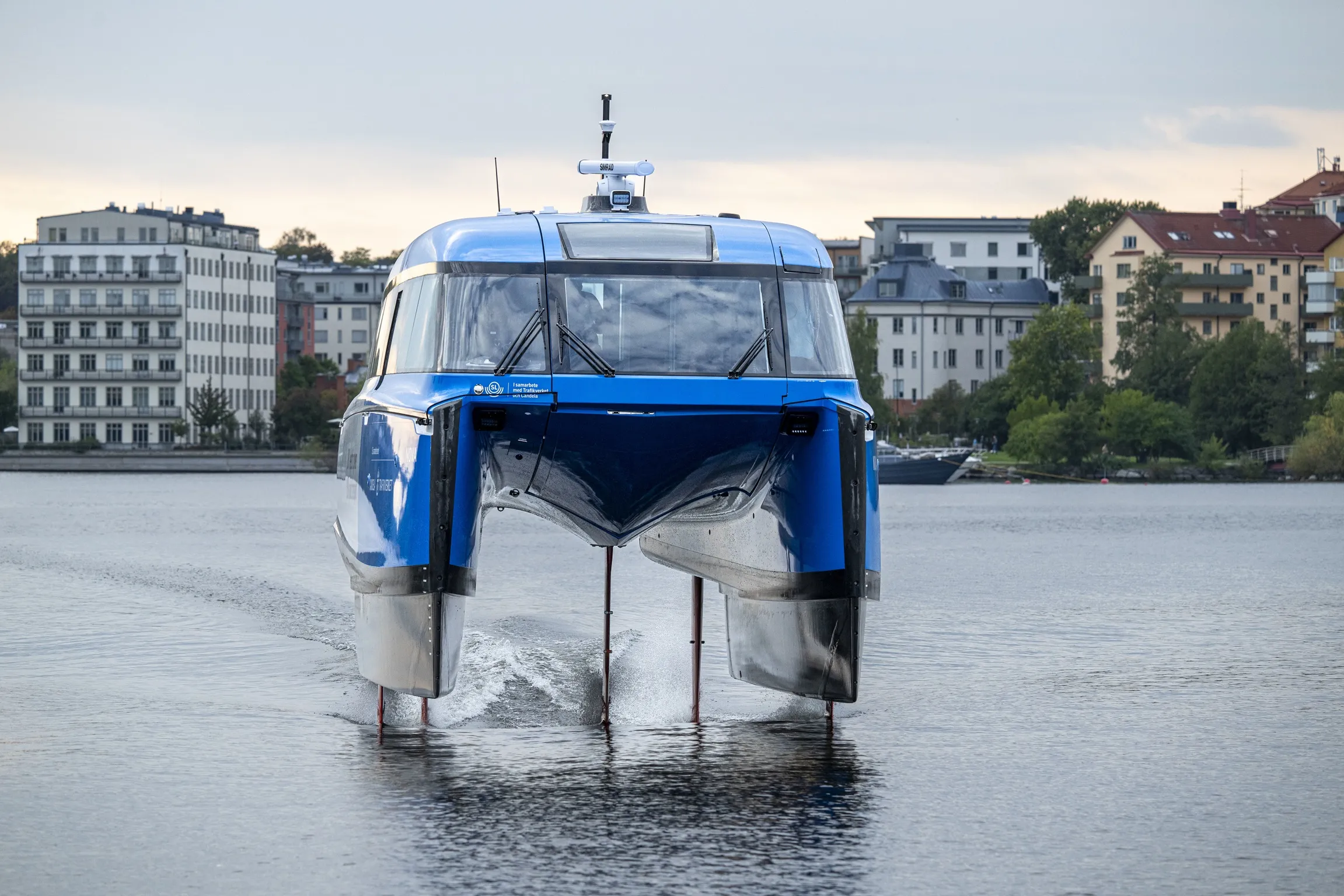

The origins of the ITS industry are not exactly clouded in mystery, but there were a lot of moving parts to it, several decades ago. Few people are better qualified to untangle this mixture of policy and private sector and history than ITS Hall of Famer Eric Sampson, CBE.
The retired senior civil servant worked at the UK’s Department for Transport, was on the European Commission’s High Level Advisory Group on ITS and chaired ITS UK and the Ertico – ITS Europe supervisory board. He also chaired the Congress board of directors for the ITS World Congresses in Paris 1994 and London 2006. Add to that he is a visiting professor at a number of universities as well and has been a transport strategy adviser to the governments of Denmark, Finland, Ukraine, Sweden and New Zealand in addition to the UK. So… how did it all begin?
“Like most things when you actually look and try to work out what the origin was, it's fuzzy and it's spread over various places,” Sampson smiles. “In Europe, we had the Eureka programme, which was a collaboration organised by the European Conference of Ministers of Transport, which is now the ITF [International Transport Forum]. Their feeling was that we're not putting enough technology into traffic management. Then the Prometheus programme, which stood for ‘Programme for a European traffic with highest efficiency and unprecedented safety', came along in 1987. And when you look at what Prometheus actually covered, it was extremely broad: there were a number of chapters which were very far-sighted, like artificial intelligence and connected vehicles.”
‘Collaboration encouragement’
Prometheus led the European Commission, under long-standing EU transport and mobility pioneer Fotis Karamitsos, to invent the Drive programme – ‘Dedicated road infrastructure for vehicle safety in Europe’. Sampson says this was aimed at “bringing the clans together” in Europe, at least.
“[Paris in 1994] was a great success twice over, because it signalled to the other regions that this mad idea works and it does attract attention, it does spread the word” Eric Sampson
“Fotis unashamedly told people - and none of them believed him - he said: ‘I'm using this as a mechanism to get you all to work together, because I think you're all competing stupidly. The competition is overseas - it's not between ‘you and him within Europe’. And so he was quite open and said it's a ‘collaboration encouragement’ programme.”
In 1991 or 1992, he can’t remember which, Sampson went to a conference on vehicle navigation in Yokohama, Japan, organised by Vertis. “And I can remember being stunned when I went in to a hotel corridor, and it was lined with about 12 different brands of in-vehicle navigation system: And we thought: ‘God, they are way ahead!’”
Sampson recalls a discussion with Russ Shields, who led Navigation Technologies – which later became Navteq, and is now Here – plus Hajime Amano from Vertis (which became ITS Japan) and the late Masaki Koshi from the University of Tokyo. “And the discussion was: ‘This was an extremely successful meeting because it was international, but we've got far too many little meetings, focusing on incredibly narrow subjects,” Sampson says. “What we want is something that's global and broader so we can learn by looking sideways as well as downwards. And Koshi said: ‘We need an ITS World Congress.’ Now, I would swear on my deathbed that was the first time those words, that expression, have been used.”
Regional rotation
So where did Koshi get the phrase ‘ITS’ from? “I don’t know!” Sampson says. “Because up to then, Europe was talking ‘transport telematics’; America was talking ‘intelligent vehicle highway systems’, which became ITS America. In Japan they had Vertis. I don't know whether it was Koshi just playing with words but we thought: ‘Yes, that makes sense: we will have an ITS World Congress’. And the other thing we agreed was it had to be global. And the suggestion was made that it would rotate amongst the regions.”

The first ITS World Congress took place in Paris in 1994. Given that it was coming from a standing start, it now looks surprisingly big, with several ministers and the EC transport commissioner in attendance. “It was only three days,” says Sampson. “We realised that there was a lot of unmet demand for this sort of event. The French government put a lot of energy into publicising it, and it was a great success twice over, because it signalled to the other regions that this mad idea works and it does attract attention, it does spread the word.”
Communications were tricky. “It was 2G telephony, GPS with the wobble, we’d just moved from 386 to 486 processors – so a thousandth of the horsepower you're now getting from a decent laptop,” Sampson explains. There was no email, so correspondence was by fax; there was no Eurotunnel so meetings in Paris with contractors required flights and took over two days from the UK. There was also no ITS International Daily News – that didn’t come until the ITS World Congress in Turin in 2000. To get a permanent record of what occurred at the first congresses, you “had your six or seven volumes of proceedings shipped to you at your home address”.
Industry showcase
The material on display on the exhibition floor at the first two ITS World Congresses – in Paris and Yokohama – was very much focused on automotive. “It's never been so car-intensive,” says Sampson. “It was a showcase for the industry: all the major manufacturers were there, all trying to show that they were up to speed with this marvellous new technology that suddenly appeared because previously ‘sensitive’ defence technology was made available.” It took a long time to move from the auto industry’s “This is what we sell; there are other colours” to asking “What is it that users need and how do we build it?”

If you’re looking for the genesis of ITS as a concept, then the automotive industry sounds like a pretty good place to start. But Sampson suggests it is more nuanced than that. “No, if somebody said ‘what was the origin?’, I think it was national and regional governments coming together in different places, essentially trying to make sense of ‘how the hell do I get my city unlocked? It's congested’. That's my feeling - it came from there. One of the things that was realised is we need to involve the vehicles: we can stop people getting lost in their trips with GPS position-fixing and navigation data.”
Therefore, urban mobility – rather than highways traffic - was always at the heart of ITS? “No, that’s also too simple,” Sampson muses. “I think it was a mix of ‘we need to do more to manage inter-urban and major roads, and we've got to do more to declutter what's going on in cities’. So you've got different things like the Scoot-style initiative - how do we manage what's going on in the city - and then rolling that out onto the inter-urban roads. And then, almost as the late entrants into the race, the demand management idea - which is the code phrase for ‘road user charging’.”
Climate change didn’t enter the ITS sector’s thinking until about 10 years later, he thinks. “It was almost like the tobacco lobby - the causality hadn’t been accepted by everybody,” Sampson says. “It was in the ‘too difficult’ category so it was shoved to the side. But we started putting climate change - or an environmental impact topic – into congresses quite early on.”
Familiar ideas
The focus on automotive in the early years of the ITS World Congress did not start to shift noticeably until Chicago in 2002, he thinks.
But mass transit was part of the ITS sector from the beginning, particularly in Europe. “Not least because most mainland European cities subsidised public transport heavily,” Sampson explains. “It's one of the major problems why Mobility as a Service hasn’t shot through the roof: cities and governments cannot get it into their head that they’re going to have to subsidise a private operator rather than a public one.”
As we consider what’s coming next in ITS, it’s instructive to see that the main work packages of the European Commission’s Drive initiative – back in the late 1980s and early 1990s - included some familiar ideas: demand management, traffic and travel information, freight, public transport management, driver assistance and cooperative driving integrated into urban traffic management. In other words, what the ITS sector has been looking at doesn’t seem to have changed greatly for several decades.
“Well, there’s two ways of looking at this,” smiles Sampson. “If you go and look at a David Hockney picture you can say: ‘Well it’s just the same old red, yellow, green and blue paint as was used by Rembrandt. What's different?’ Well, the answer is he's applied it in a totally different way. He's sent his message in different ways.”

A musical analogy is even better, Sampson says. “You’ve got the solo piano, solo voice, solo violin. Then you've got the duet, and you've got the quartet. And then you've got the larger chamber piece, then the full orchestra. And that's what we've been doing in transport.” From managing one intersection to several, to making a whole city, in effect, one Scoot sector, and then linking that to a national picture in terms of traffic management, ITS technology has evolved to solve different problems: “So the elements are the same but they've been applied to much more complicated cases.”
Genuinely revolutionary
Integrating intelligent transportation systems to existing infrastructure can be a challenge. “I think it's partly because infrastructure is designed for old age. Steve Gooding [director of the RAC Foundation] used to say my job is a bit like forestry: I'm planting transport infrastructure to last forever. The life of a bridge or something is decades, and it's very hard to change it. If you come along and say: ‘Hey, I've got a wonderful innovation’, everybody who has been brought up with existing infrastructure says: ‘We don’t like it because it's too disruptive’.”
Sampson suggests that, since the 1990s, there have only been a few genuinely revolutionary advances in transport: “If somebody said: ‘What's the big difference between 1994 and now?’ I think it’s the fact that the components work together. Integrated ticketing and payment, and smart card technology for payment; the impacts of social media and the arrival of connected and autonomous vehicles - that's revolutionary, everything else is evolutionary. We’ve taken what we've already got and made it work better and made it work in partnership with the system next door as well.”
What about AI and Big Data? Were they mentioned in the early days of ITS, or were they at least bubbling under in the debate?
“Well, AI was in Prometheus - so that's 1987 and the UK’s Lighthill Report was 1973. Big Data was later. That was a genuine case where guys working in the back room were able to do things that previously were unthinkable; the power of IT suddenly meant: ‘I've got the powerful tools and I've got the storage facilities - I can now do what I’ve wanted to do for ages’. And that has certainly fed into the automated and connected space.”
He concludes: “There's a constant stream of small techie disruptions, and occasionally a small one turns out to be very big – and if I could pick which ones they were, I'd be quite wealthy.”











